
by Sandra Gulland | Nov 22, 2016 | Baroque Explorations, Mistress of the Sun, Resources for Readers |
As I’ve no doubt mentioned before, I’m a big fan of Renaissance magazine. I devour every issue as soon as it arrives. It’s largely intended for devotees of living history, specifically those who participate in Renaissance fairs. That aspect of the publication doesn’t appeal to me, but their historical background and news items are fantastic. I end up tucking at least one article per issue into a research database (by photographing and emailing it to Evernote).
I dog-eared two articles in the April/May 2013 issue: one on the Weald and Downland Open Air Museum in England (drool, some day I hope to go), and the other on that most secretive of topics—the privy.
I was taken aback by this remark by a travelling Italian priest in 1518:
“Whereas in Germany there are one or two tin chamber pots to every bed (in Flanders they are made of brass and very clean), in France for want of any alternative, one has to urinate on the fire. They do this everywhere, by night and day, and indeed, the greater the nobleman or lord, the more readily or openly he will do it.”
I’d read of this practice — I have such a scene in my last novel, Mistress of the Sun, when a child is overtaken with the need to relieve herself — but frankly, I didn’t think it so commonplace.

The French, in turn, are reported to have been horrified by the British habit of men relieving themselves at the dining table:
English gentlemen, known for their prodigious drinking habits, were wont to relieve themselves where they were – in the dining room, for instance, or in a common room of a public inn – where they did not always aim straight and true (as the young man at left), much to the chagrin and disbelief of French travelers, some of whom wrote about this unsanitary habit. (As reported in a review of the book Privies and Water Closets by David J. Eveleigh on the excellent blog, Jane Austen’s World.)
Some details from the Renaissance magazine article that may show up in one of my novels:
“Night men”—who cleaned out the cesspits—were well paid, as much as skilled tradesmen.
Refreshing a privy with juniper.
One sometimes sees images of several privy holes all in a row. I have a friend who restored a house in Mexico, formerly a monastery. What’s now their breakfast nook was once a three-hole privy. I suspect this was a social time. (Let’s see this in fiction!)
Of course people would build their privy over a river or stream, but what to do in town? Some built a privy on a sort of bridge connecting two houses, emptying into an alley. (Gross.)
The wealthy, of course, often had more elegant solutions …

… when they weren’t using the fireplace, that is. ;-(
Coincidently, just this week there is a post on this subject — “Secrets of a Roman Sewer” — on the wonderful historical blog Wonders & Marvels. There is a great deal to be learned from “poo,” but I’ll leave it at that.
I know this subject seems like an unpleasant diversion from writing about a glamorous Hoyden or Firebrand, but when writing about such a person in fiction, one rather needs to know! As well, I confess: my husband and I had an outdoor privy when we moved to our log cabin in the country, decades ago. I think of it with great affection. As a mother of toddlers, I would enjoy a quiet minute or two on what my own characters refer to as “the necessary.”

by Sandra Gulland | Jul 26, 2015 | Adventures of a Writing Life, Resources for Readers, Resources for Writers, The Shadow Queen, The Writing Process |
Another lovely week. Summer is flying by. Here is my week in delectable links ….
Links for writers …
• Writing workflow—an infographic
• Another writer/artist (I’m keeping track!): Antoine de Saint-Exupéry’s Original Watercolors for The Little Prince.
• J. K. Rowling’s spreadsheet (shown above) shows how she wrote Harry Potter.
• The Experience of Growing Up in Medieval Society.
• Medical recipes in the 18th century.
• The New & Complete Newgate Calendar, or Villainy Displayed in all its Branches. Irresistible.
Link for Napoleonistas …
• What Napoleon’s hat tells us about the power of branding.
My news …
• I’m stoked about this rave review of The Shadow Queen!
• I’m also proud to have been included in the Raynes Illumination exhibit, which includes photographs of 50 Canadian writers.
• I’m giving a talk this Wednesday for the Bonnechere Authors Festival. If you’re close-by, come!
Have a great week!
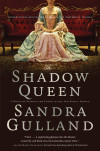
by Sandra Gulland | Apr 7, 2015 | Adventures of a Writing Life, The Shadow Queen, The Sun Court Duet |
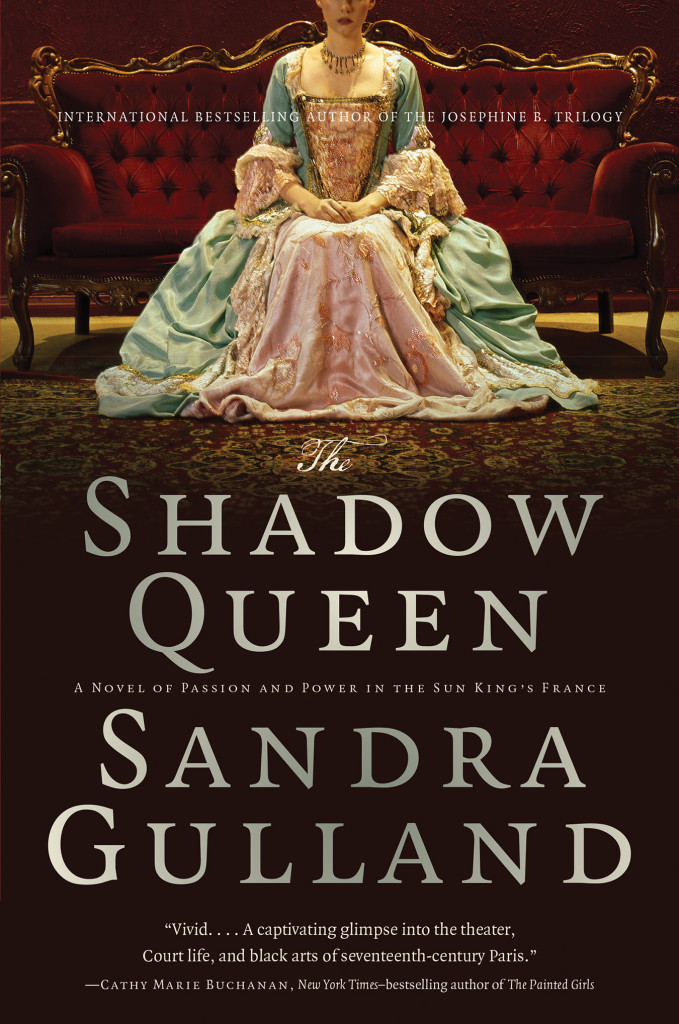
Today, in Canada, a simply gorgeous paperback edition of The Shadow Queen is out!
Frankly, it’s hard to settle down to work. It’s tough being so far away (we’re in Mexico still). I’ve yet to even get my hands on it.
Procrastination #1: I up-dated my paintings page.

by Sandra Gulland | Jan 7, 2015 | Adventures of a Writing Life, Publication, Resources for Writers, The Shadow Queen, The Sun Court Duet |
Yesterday was a crazy day: I sent out a newsletter, the U.S. paperback edition of The Shadow Queen came out, and — quite by coincidence — my INK e-book edition of The Shadow Queen launched in the UK and beyond.
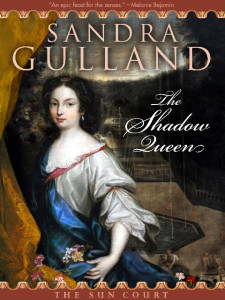
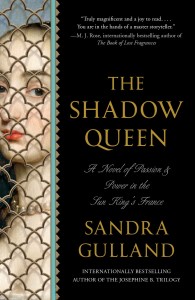
Any one of these requires quite a bit of on-line attention, but to have all three in one morning?
Too much!
By 11:00, I decided I needed a walk, so I went out to buy watercolour supplies for the class I’m taking this afternoon. Very therapeutic!
And soon … to the beach, where I will be reading the 4th draft of The Game of Hope with an editorial eye. I put the novel aside December 1. It will be interesting to read it afresh.
I’m reading:
Publishing 101 by Jane Friedman. Excellent. Highly recommended.
The Book of Strange New Things by Michel Faber. I’m only a few chapters in and I love it already. Will it last? I very rarely read speculative fiction. I suspect this one will hold me.

by Sandra Gulland | Dec 19, 2014 | Baroque Explorations, Recommended Books, Movies, Podcasts, etc., The Sun Court Duet |
It’s always a pleasure to see a historical film set in the Court of the Sun King. A Little Chaos, staring Kate Winslet, promises to be sumptuous. I always take issue with the portrayals because I have my own vision of these characters. None the less, I’m eager to watch it, especially to see how Versailles is portrayed in its early days.
The story of A Little Chaos
Madame Sabine De Barra (Kate Winslet) is an unlikely candidate for landscape architect of the still-to-be-completed Palace of Versailles. She has little time for the classical, ordered designs of the man who hires her, the famous architect Le Nôtre (Matthias Schoenaerts). However, as she works on her creation, she finds herself drawn to the enigmatic Le Nôtre and forced to negotiate the perilous rivalries and intricate etiquette of the court of King Louis XIV (Alan Rickman). But Sabine is made of strong stuff; her honesty and compassion help her to overcome both the challenges of her newfound popularity, and an unspeakable tragedy from her past, to win the favour of the Sun King and the heart of Le Nôtre.
Oh, how this makes me long to see such a movie about Claudette or Petite!
Since I wrote this post, and since A Little Chaos has come out there have been mixed reviews. One objection is that the real story of Le Nôtre is quite interesting enough without tarting it up with a love interest. He was the most steady and loyal of men.
From the Guardian: A Little Chaos: leads historical accuracy down the garden path
Only 6.5 on IMDb: too bad!
From the BBC: Costume drama A Little Chaos fails to blossom
Nonetheless, I can’t wait to see A Little Chaos. Have you seen it? What did you think?

by Sandra Gulland | May 10, 2014 | Adventures of a Writing Life, The Shadow Queen |
There are some wonderful reviews of The Shadow Queen on Amazon and Goodreads. Here is a quote from one review I like very much, by “Curtis” (otherwise known to me as @gariovich on Twitter):
Athénaïs wields such power over the king that she is referred to as The Shadow Queen. Some may think that the title of this novel is a reference to this, but I would argue the title refers to Claudette. She is the true queen of the novel. She emerges from a life riddled with strife to one of self-determination. In the end, it is Claudette who has emerged from the shadows of poverty and disadvantage to reign over her own destiny.
I especially like this because early reviews took exception to the title. Now reviewers are interpreting the title less literally, which is how it is intended. (I have written about the title here.)
A few review quotes:
JustOneMoreChapter.com: “I adored The Shadow Queen right from the first page.”
I had the unexpected pleasure of meeting Margaret, the reviewer, at one of my readings.
A bookish affair: “My fellow historical fiction fans will eat it up!”
Trudy Morgan-Cole at Compulsive Overreader: “While the glimpses of court life are intriguing and, as always with Gulland, beautifully drawn, what really fascinated me in this book is the theatre world.”
I’ve been very pleased by the number of readers who love the theatre world of The Shadow Queen.
This post is going on too long … . As Mark Twain famously said, “If I had had more time, I would have written a shorter letter.”
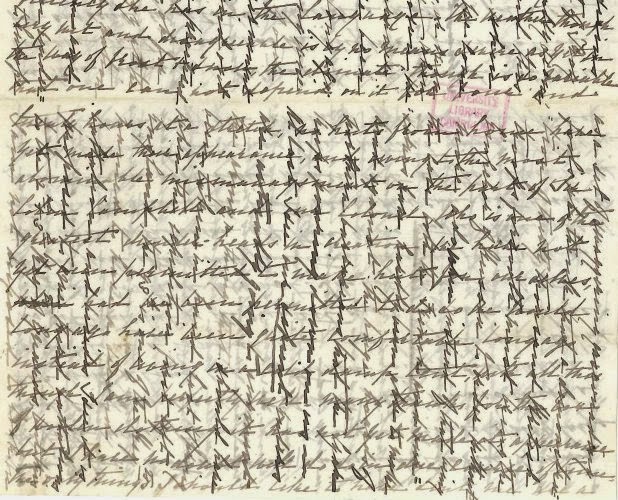
I learned today that in Jane Austen’s England, the receiver of the letter paid according to how many pages the letter was, as well as by how far it had travelled. People put a very great deal onto one page by “cross” writing.
Imagine writing a novel this way … Actually, that rather fits.
Happy Mother’s day, one and all. May there be the gift of time for reading in your day.













